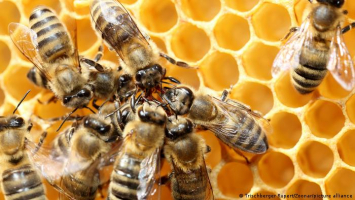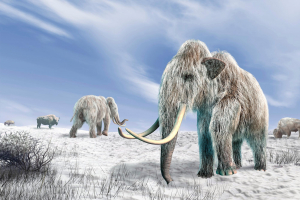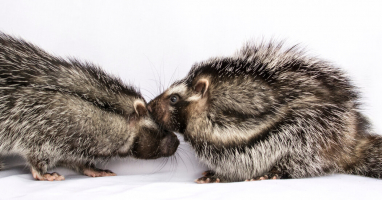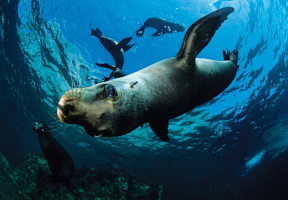Top 10 Life Forms We Can Trace Back to One Source
Everything has a beginning. It's an absurdly obvious statement that is rarely even worth stating. However, the implications are rarely investigated. What ... read more...country are you from? Finding the precise beginnings of humans, as well as most other life forms, is not an easy task. However, there are some things that we can reasonably pinpoint their origins, frequently yielding unexpected outcomes. Here are some kinds of Life Forms We Can Trace Back to One Source.
-
Despite only being present in roughly 10% of the population, blue eyes are the second most prevalent eye color worldwide. Scientists have been able to track the color's genetic mutation all the way back to a single common ancestor who lived between 6,000 and 10,000 years ago. There were only those with brown eyes back then. The 10% of people with blue eyes who are alive today have inherited a mutation in a particular gene that determines eye color from one person.
The brown allele was turned off in the affected person and their ancestors as a result of the gene mutation. In essence, the choice for brown eyes was eliminated because the mutation reduces the body's capacity to manufacture melanin. As a result, brown eyes cannot fully develop and are replaced by blue eyes. The mutation has no genetic advantage but also no disadvantage, and it appears to be one of those chance events that happens randomly in nature.

https://truththeory.com 
https://www.yahoo.com/ -
In the North Atlantic Ocean, close to Iceland, are the Faroe Islands. There are roughly 158,000 residents there currently or in the past, and astonishingly, 149,000 of them can all trace their ancestry to one man. Family gatherings must be spectacular. Around 21,000 Faroese reside in neighboring nations, primarily in Norway, Iceland, and Denmark. The majority of Faroese are citizens of Denmark, a member state of which the Faroe Islands are a part. One of the North Germanic languages, Faroese is closely related to the western Norwegian and Icelandic dialects.
Clemen Laugesen Follerup is regarded as the prolific ancestor of the majority of Faroese Islanders. In the seventeenth century, he had 23 kids. 66 grandkids in 27 villages resulted from that. The island's inhabitants were added to something called the Genetic BioBank in 2006, which served as a kind of Faroese national genetic registry. Everyone the computer program recorded turned out to be a cousin of everyone else, so it continued reading mistakes.
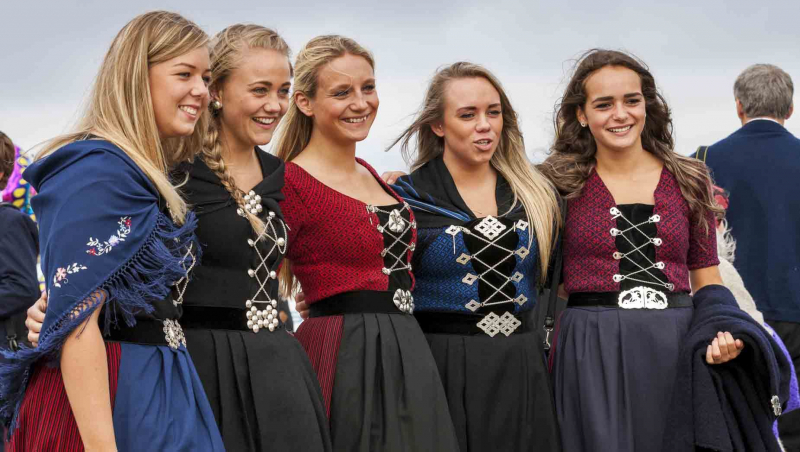
https://www.pinterest.com/ 
https://www.meganstarr.com/ -
After winning races, a horse is frequently retired to a stud farm where breeders work to carry on and enhance his genetic line. The Darley Arabian appears to have performed that task better than any other horse.
In the globe, there are 500,000 Thoroughbred horses. The term "thoroughbred," which is sometimes used interchangeably with "purebred," really refers to a particular breed of race horse. Nearly all of the 500,000 of these racehorses can be linked to 28 distinct horses, and they are frequently regarded as the best racehorses in the world. And of those, the Darley Arabian stallion is the source of 95% of all males.
It was claimed that Thomas Darley had kidnapped the colt from a Syrian sheik before buying it from him. Manak or Manica was the name of the horse. The Arabian back in England was the dam of many well-known horses, and it is reported that the horse lived to be 30 years old, which is an exceptional age for a horse.

https://www.thevetexpert.com 
http://wasecaanimalscience.pbworks.com/ -
Hawaii is well-known for many things, including its stunning beaches and luaus. Additionally popular throughout the state, 40 million pounds of macadamia nuts were produced in 2019. Although Australia and South Africa produce the majority of the world's macadamia nuts, their origins are not very diverse. One particular tree in Australia is the source of 70% of the world's macadamia nuts.
Plant biodiversity is a significant issue. Scientists are very interested in this area since the lack of diversity in bananas has already led to the extinction of an entire strain of them. When researchers tried to determine the origins of macadamia trees, they tested samples from domesticated trees in Hawaii and wild trees in Australia. They discovered that all of the samples could be traced to a tiny population on the exclusive island of Moloo. They believe all trees likely originated from one particular tree because the genetic differences between them were so small.
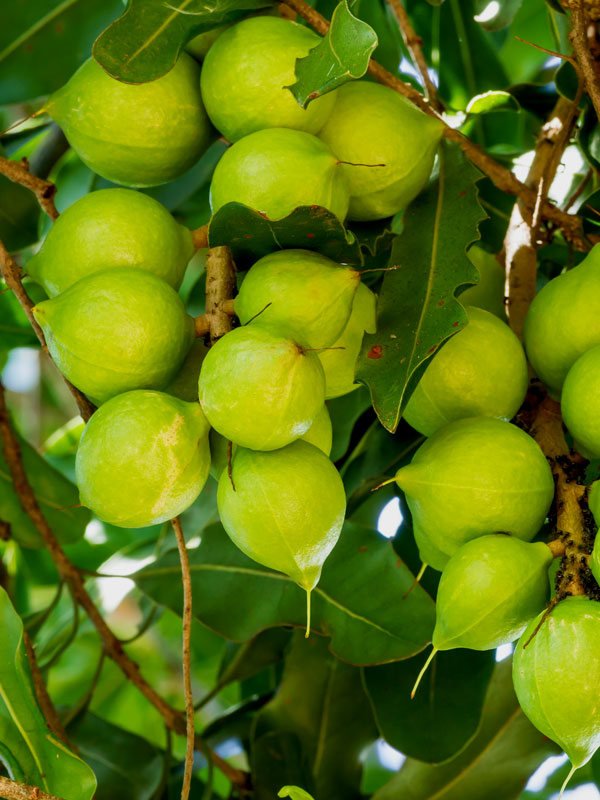
https://urbantropicals.com/ 
https://urbantropicals.com -
The fact that mountain goats are not indigenous to South Dakota surprises a lot of people, both tourists and locals. These agile animals, along with bison and bighorn sheep, are among the state's most recognizable species and are frequently seen climbing around Mount Rushmore. But where did they come from?
In Western Canada and the United States, mountain goats, also referred to as Rocky Mountain Goats, are common. Their estimated population is between 75,000 and 100,000. All of the Black Hills specimens can be linked to six Canadian goats. Goats being goats, they weren't content to stay in their enclosures after being donated to Custer State Park in 1924.
Numerous animals were kept at the Custer State Park Zoo, including a bear, deer, elk, bobcat, wolf, porcupine, fox, a Yellowstone moose, coyotes, and badgers. Visitors would be able to see these animals without running the risk of encountering them in the wild. The six goats managed to get away and find refuge in the granite mountains after venturing into the wild. Today's increase of more than 200 is continuing, with no signs of stopping down any time soon.
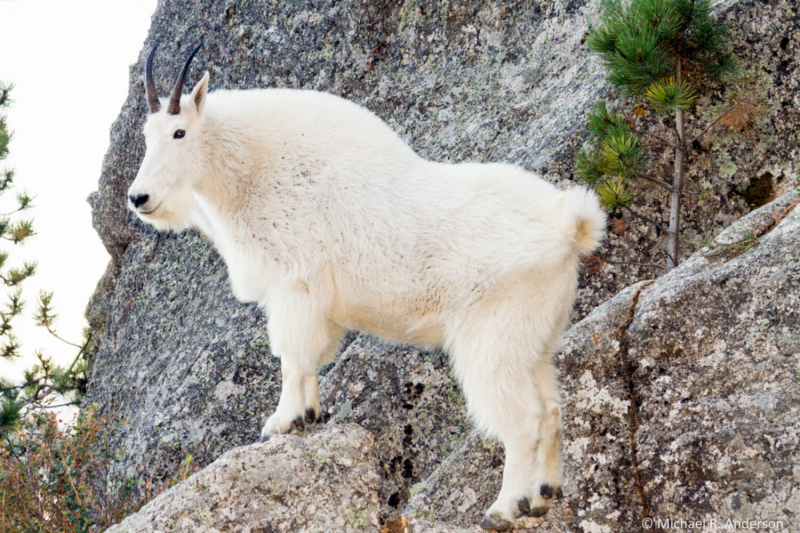
https://www.andersonviewpoint.com 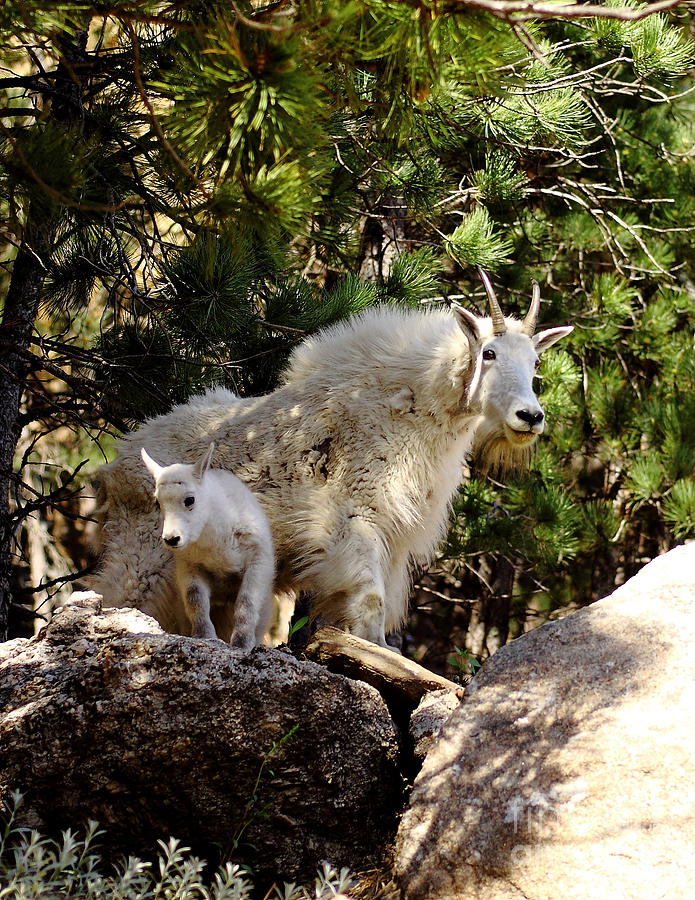
https://fineartamerica.com -
The Golden Retriever ranked third among dog breeds in America in 2021, according to the American Kennel Club. In fact, it frequently ranks among the top ten breeds. They tend to make wonderful family pets because they are lovable and a little silly. The origins of the entire breed can also be attributed to two particular dogs named Nous and Belle in 1868.
The first of the breed, a dog by the name of Nous who was reportedly some sort of yellow retriever, belonged to a Scotsman by the name of Sir Dudley Courts Marjoribanks. Nous was originally said to be a Russian circus dog, but there is no proof of that. The truth appears to be that he simply saw the dog while out for a walk and purchased it from a cobbler.
As a breeder, Sir Dudley maintained thorough breeding logs. He crossed the dog with Belle, a Tweed Water Spaniel, and they had a litter of four puppies in 1868, according to records that are still in existence today. The resulting Retriever and Water Spaniel cross produced a sporting dog with a light coat that unmistakably appealed to people.

https://thehappypuppysite.com 
http://animal-council.blogspot.com/ -
An estimated 200 million wild rabbits live in Australia. Does a nation the size of Australia have that many rabbits? Certainly, given that it is intended to have none. Rabbits were never intended to be in Australia in the first place, making them one of the numerous invasive animals that have caused issues there. All 200 million of them originate from a small number of 1859 releases.
Despite arriving at the continent as early as 1788, it's thought that between 13 and 24 of the animals were released from settler Thomas Austin's farm in 1859. He may have released the animals for hunting after letting them run free in his yard. Clearly, he wasn't able to find them all.Since then, Australians have been waging a losing war against rabbits. They were killing two million people annually in the late 1800s and making little progress. Most infamously, they attempted to build a fence that was successful against larger animals but ineffective against rabbits over the entire nation. Before the building was constructed, they were on the opposite side of the fence.
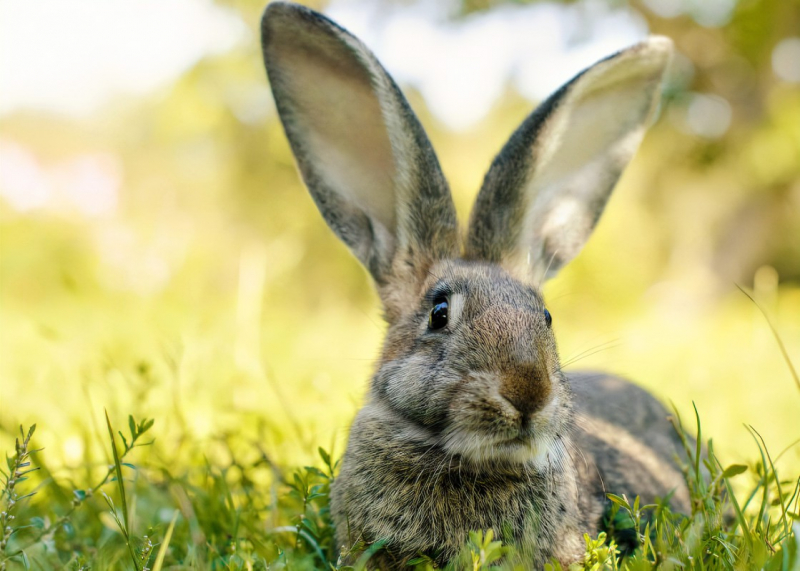
http://www.yurtopic.com/ 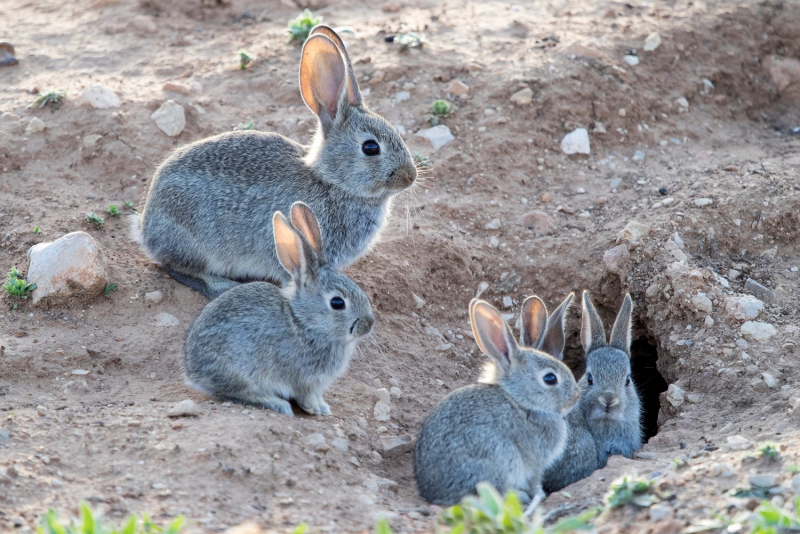
https://cosmosmagazine.com/ -
Depending on how much diversity your store offers, you might only have a small number of selections if you go shopping for mushrooms right now. However, if they do sell fresh mushrooms at all, they will likely be those white ones known as table or button mushrooms. They can all be linked to a single Pennsylvania farm in the year 1925 and are most likely the most widespread kind in the Western world.
Mushrooms were mostly brown before 1925. Today, brown cremini mushrooms may be sold next to white button mushrooms in your local supermarket; other than their color, they are visually similar. Because they essentially are, that is. At Keystone Mushroom Farm, Louis Ferdinand Lambert was cultivating brown mushrooms when he spotted a white one in the batch. It was a mutation, purely accidental. He took that one back to his lab and grew the spores because he was a budding amateur mycologist.
The white mushrooms had more consistent size and shape as well as quicker growth. The country's largest mushroom crop by 1933, it soon produced tens of millions of pounds of mushrooms annually. Customers preferred the color and shape, and today's most popular mushroom is still a result of one small mutant from 1925.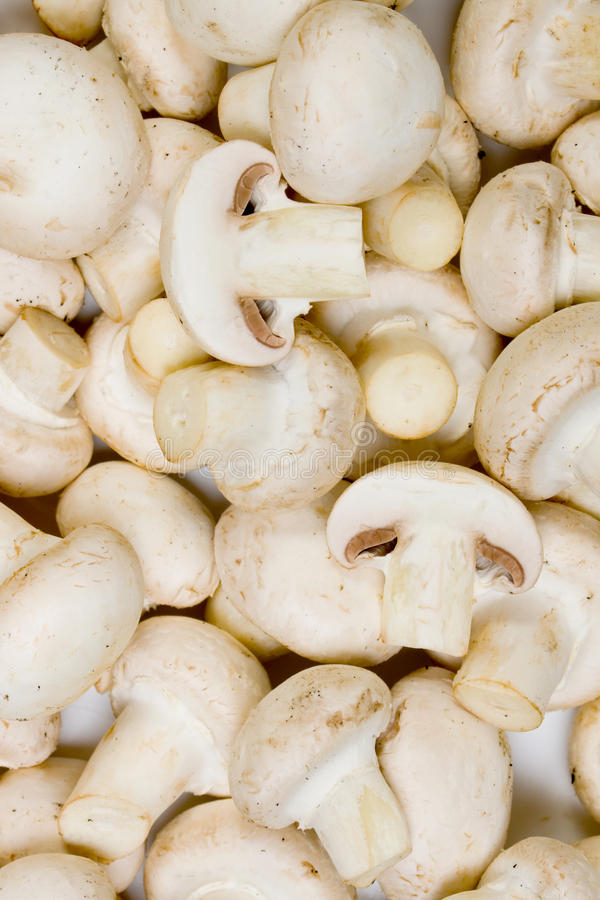
https://www.dreamstime.com/ 
https://mushroomsite.com -
The domestication of cats and dogs, the two most popular house pets worldwide, has received a lot of attention. The majority of us are aware that wolves were used to domesticate dogs long ago, and cats appear to have domesticated themselves alongside humans as a seemingly deliberate action to secure food and shelter. However, many other animals, including hamsters, are kept as pets by people.
The majority of us have probably never encountered a wild hamster, yet they do exist. The current domestic hamster may be traced to a particular breeding couple from Syria. After Aharoni seized the hamsters, events rapidly became out of control. The mother consumed many infants. A few more ran away and were never located. However, one set of siblings reproduced, as hamsters often do. They turned became the Adam and Eve of the contemporary hamster universe. They have 150 offspring. They were shipped to laboratories all over the world, where they kept reproducing. Nowadays, it is almost a given that any hamster you see in a pet shop anywhere in the world is descended from that breeding pair.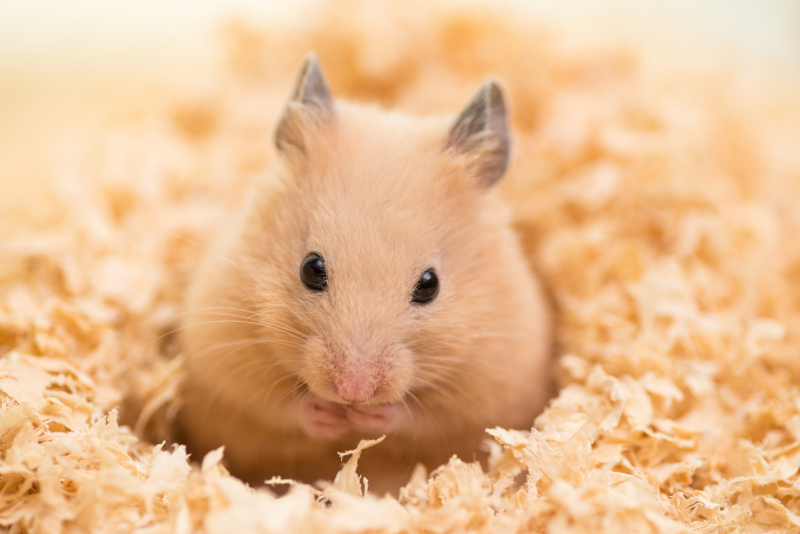
https://smallpetselect.com 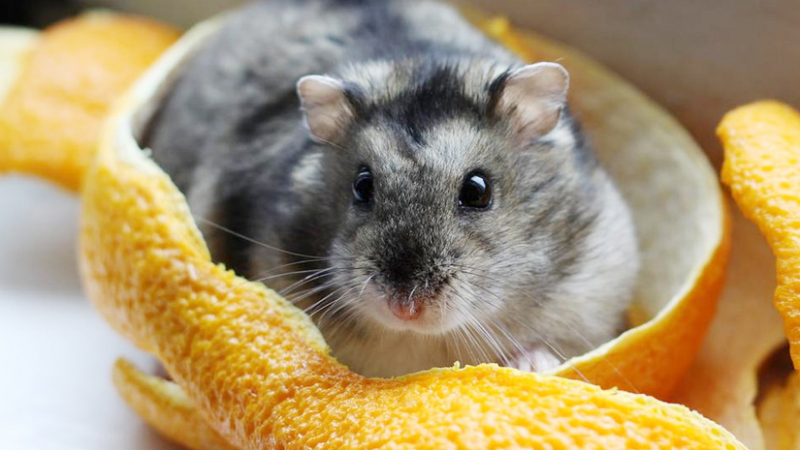
https://www.funbuzztime.com/ -
There is a lot of love for cow meat in America, where the average person consumes 55lbs of beef annually. While there were herds of animals like aurochs in the past, our modern cow as we know it did not exist in the wild, thus our ancient predecessors never experienced that pleasure. Our current global cow family can be traced back to a herd of 81 female animals that were bred over 11,000 years ago.
European researchers examine DNA samples acquired from both living cattle and bones taken from ancient places that date back to the origins of farming as we know it. Only if the initial herd was capped at a size of roughly 80 animals that came from the old aurochs, which was somewhat similar to a modern cow but not precisely the same thing and definitely considerably bigger and wilder, could the genetic distinctions shown in current cattle have existed.
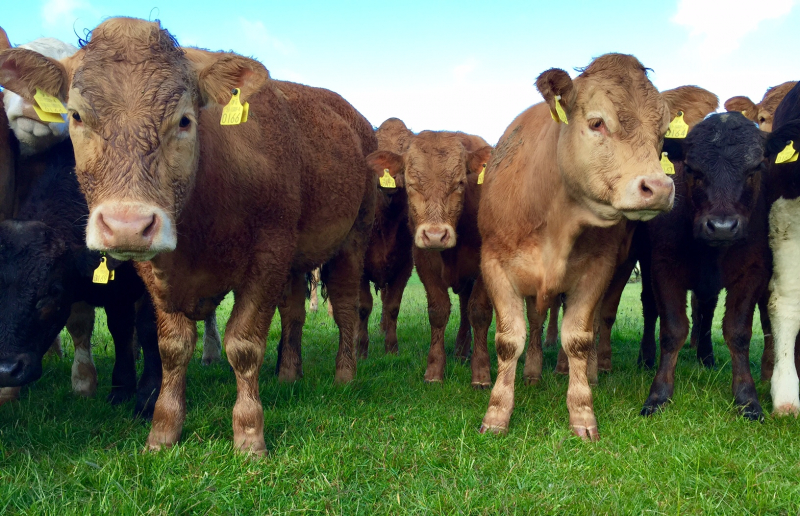
https://www.agriland.ie 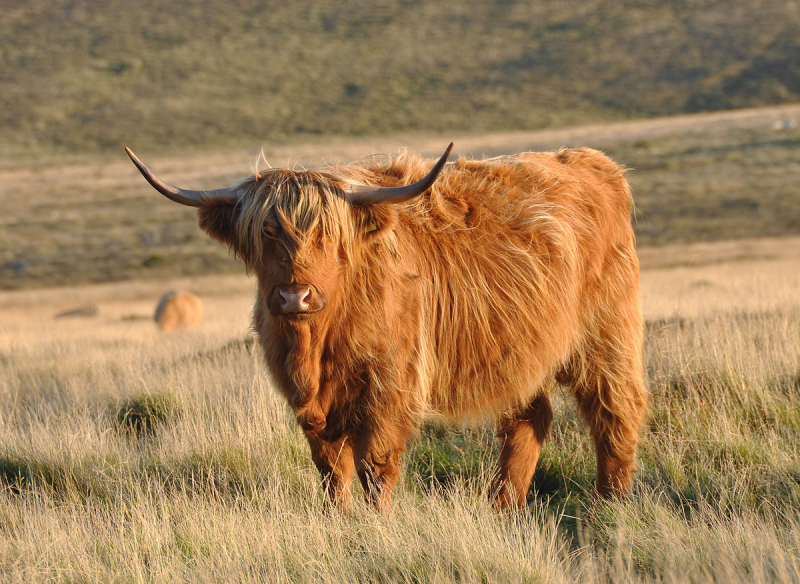
https://en.wikipedia.org/



















